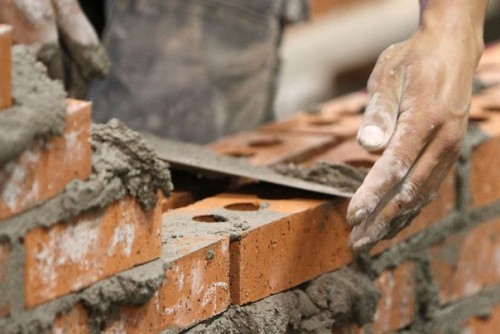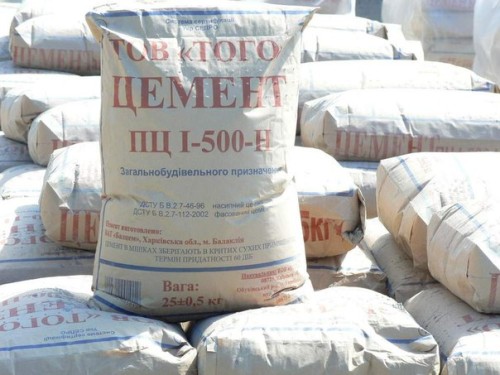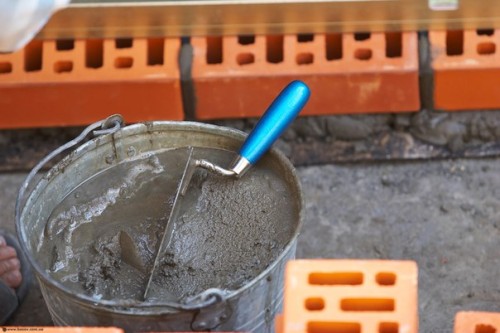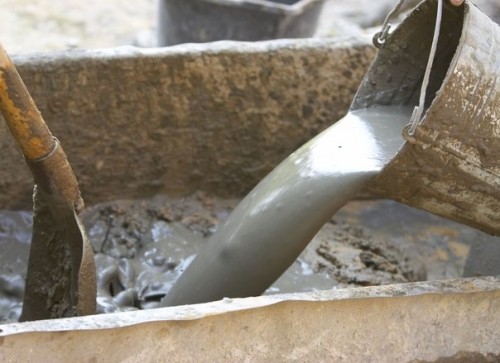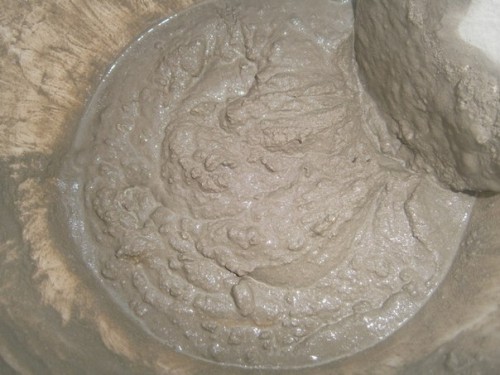
Brick masonry solution: composition, proportion, manufacture Construction

In construction for bonding bricks with each other and the prevention of their offset is used by a special solution. This building solution should be, first of all, high quality, to prevent the sophisticated and shrinkage of the structure, as well as plastic, to rest on the brick to the uniform layer. The preparation of the solution needs to be given sufficient attention, as the masonry with its use will have to simultane more than one year.
Content
Brick Masonry Solution
The brick laying solution contains binding substances, it consists of several components. Lime or cement are used as the binding components, so the mixture may be on a limestone, cement-limestone or cement basis. Another important "ingredient" of the solution is sand. It is best to use sand without unnecessary impurities, such as land, clay, plant roots, leaves, grass, etc.
Mixtures for brickwork by the nature of binders are:
- air hardening (air);
- water hardening (hydraulic).
Solutions depending on the number of binding substances are divided into:
- simple - the composition includes only one binding component (cement or lime);
- complicated - the composition includes two or more binding components, which thoroughly change the properties and the structure of the solution.
The composition of the brick laying solution
Depending on the composition, the brick laying solution is mainly:
- Cement.
- Lime.
- Cement-lime.
- Cement-clay.
Cement mortar
The most common appearance is used most often. This type of solution has special rigidity, strength and water resistance. It is used for the construction of both low-rise and multi-storey buildings and structures, as well as for underground masonry.
Mortar
This solution has high indicators of plasticity and low shrink. It is convenient for use, it is easy to lay it, it perfectly sticks to the surface of many frequently used building materials. It is also warmer than cement mortar. It is used to build outdoor premises, with small loads.
Cement-lime solution
This solution has a wide range of applications, used both for the construction of underground and for the construction of underground parts of buildings. It is as well as lime, easily and simply fit, has high strength and frost resistance. In this type of masonry mixture, the heat insulating capacity is higher than that of the previous two.
Cement-clay solution
The strength of this type of solution is slightly lower than that of cement, but the advantages of such a solution are to be in its cheapness, plasticity, frost resistance and durability. Such a mixture is suitable for any work with ceramics and stone, but it is necessary to ensure that the clay is careful before it is carefully ordered and delivered from unnecessary impurities. In addition, clay must also be crushed to the necessary state.
Solution proportions for brickwork
The proportions of the solution for masonry bricks depend on the type of soil, such as building and from the floor of the structure.
- The proportions of the cement mortar: the generally accepted norm is considered the ratio of binder material (cement) and aggregate (sand) 1: 3. Depending on the grade of cement, the degree of sand humidity and the requirements for the use of the solution, these proportions can be changed up to 1: 6.
- The proportions of the lime solution: to obtain it in the lime, sand is added in the ratio from 1: 2 to 1: 5, then the mixture is poured with water until a homogeneous mass is obtained.
- The proportions of the cement-lime solution: mainly the preparation of this type of mixture use the ratio of cement, lime and sand in the range from 1: 1: 6 and up to 1: 3: 15.
- The proportions of the clay solution: the most common ratio of clay and sand in the finished solution is 1: 1 or 1: 2.
Masonry
To determine the amount of solution needed to create a brickwork, it is necessary to proceed from such proportions: 0.25 cubic meters of masonry mixture is approximately consumed for each square meter of masonry. If the laying consists of concrete blocks, the solution consumption will be much smaller, about 0.05 cubic meters per square meter.
When using hollow bricks, the amount of the necessary masonry solution can increase significantly, since when it is used, the masonry mixture fills all emptiness. In this case, a solution of medium density must be kneaded. In addition, it is very convenient to use, as it does not spread over the surface of the masonry.
Brand solutions for masonry
According to the strength of the generated solution, its brands are divided into several categories:
- Rarely used - gras 0 and 2.
- The most common - grades 4, 10, 25, 50 and 75.
- Specialized used in narrow-profile construction - brand 100, 150 and 200.
The brand of masonry mixtures is determined by the compression of hardened, for 28 days, cubes of the solution. No less important in construction is another value - the mobility of the solution, which depends on its composition, namely on the proportions and the type of binder and aggregate, plasticizing additive and on the volume of water injected into the water solution.
Preparation Rules for Brick Masonry
Secrets of manufacturing a masonry solution:
- Sand before its use must be sifted to get rid of unnecessary impurities, garbage, clay, rubble, etc.
- Solutions in small amounts are best mixed manually using a symptoms.
- To mix the masonry solutions in large quantities, it is best to use the concrete mixer.
- The first thing is mixed with dry components, then water is added to them in small doses until the creamy mass is reached.
- The solution is ready if, with a slope of the container in which it was kneaded, it is not poured on 40 degrees, and slowly slides over the surface.
- Cement mixture freezes for two hours, so you need to be ready to spend it throughout such a short period.
- The mortar for laying bricks in winter is used cement, it is used for the construction of bearing walls, and for internal works, a limestone or complex solution is used.
Cement mortar for brickwork: cooking process
The quality of the solution for masonry brick depends on the correctness of its manufacture. It is on how strict the rules and proportions will be observed, and the strength, durability and monolithicness of brick masonry and the building as a whole will depend.
To prepare a solution for masonry brick, we will need three components: cement, sand and water.
Production Stages:
- Sand sand. All unnecessary impurities must be removed, in order for the mixture to be homogeneous.
- Mix all dry components (cement and sand).
- Small portions add the desired amount of water, constantly stirring, in order to obtain the necessary mobility of the construction mixture.
- The solution is ready when the mass becomes sour cream.




